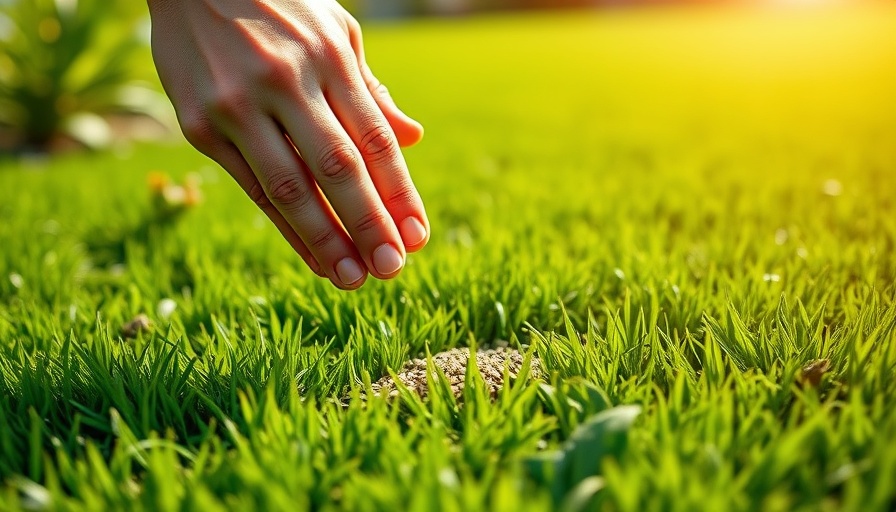
Why Overseeding Is Essential for a Thriving Lawn
Overseeding is not just a routine spring chore; it's an investment in the vigor and beauty of your lawn. As homeowners aspire for lush, green turf, maintaining the health of the grass through overseeding can keep it resilient against weeds, diseases, and environmental stress. According to experts like John Fech from the University of Nebraska-Lincoln, symptoms indicating a lawn's health needs include bare patches, thinning grass, and signs of pest infestations.
Identifying the Right Time for Overseeding
Understanding when to overseed is crucial. Typically, homeowners can follow a guideline of overseeding every 1 to 3 years, but this frequency hinges on a variety of factors. For instance, if your lawn has patches or is experiencing ongoing issues—such as pest infestations or compacted soil—annual overseeding might be necessary to rejuvenate those bare spots.
Annual overseeding is commonly observed in lawns with certain grass types, particularly those that do not propagate through underground runners. For instance, bunch-type grasses such as tall fescue and perennial ryegrass benefit from yearly overseeding, whereas creeping grasses like Kentucky bluegrass can sustain themselves better under average conditions.
Advantages of Regular Overseeding
Homes with families, pets, or frequent outdoor gatherings face tougher challenges with turf maintenance. Areas subjected to heavy foot traffic can suffer, and lawns may thin out rapidly. Regular overseeding not only addresses bare spots but also enhances the lawn's overall thickness, which acts as a natural barrier to weed invasion.
Furthermore, introducing new grass cultivars through overseeding can bring added resilience. A more diverse lawn is less prone to disease and adapts better to local conditions, ensuring that your investment goes further in terms of longevity and sustainability.
Best Practices for Overseeding
The best time to overseed varies by region and the specific grass type. Generally, late summer to early fall is the optimal window. This timing allows seeds to germinate while temperatures are still conducive to growth. For example, if you're planning to overseed a Bermuda grass lawn with ryegrass for winter appearance, you should execute this process in early winter as ryegrass cannot withstand the summer heat.
Before overseeding, homeowners should prepare the lawn by aerating, dethatching, or simply mowing to a lower height. This preparation promotes seed-to-soil contact, a vital component for successful germination.
Making the Right Decisions for Your Lawn
Determining your overseeding frequency could save homeowners from escalating lawn care costs in the long run. Regular maintenance and vigilance can lead to a vibrant, hardy lawn that stands out in the neighborhood. Consider conducting seasonal checks to identify any telltale signs your lawn might need an upgrade.
Whether overseeing every year or transitioning to a bianual schedule, understanding the signs of distress and the specific conditions of your turf will empower you to make informed decisions. Every grass type and every lawn's unique environmental condition has its own set of requirements that dictate overseeding frequency.
Common Myths about Lawn Care
As homeowners embark on their lawn care journey, it's essential to dispel some common myths associated with grass and overseeding. One prevalent misconception is that overseeding is unnecessary for established lawns. In reality, even healthy lawns can benefit from new seed types that bolster resilience and adaptation. Additionally, some believe overseeding must coincide with spring, when in fact, preparation and planting in late summer may yield far better results.
Conclusion: Your Lawn, Your Kingdom
Your lawn is more than just a patch of grass; it’s a canvas that can enhance your property's aesthetic and increase its value. By understanding when and how often to overseed, you can ensure your grass remains thick, green, and healthy, creating an inviting outdoor space for family and friends. Remember, the goal is not merely to have a lawn but to cultivate an environment that thrives with sustained care and maintenance.
 Add Row
Add Row  Add
Add 


Write A Comment